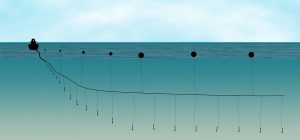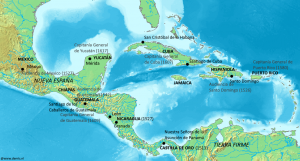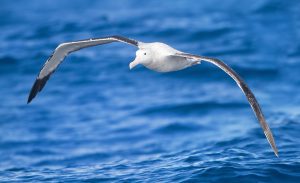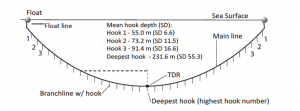A comparative analysis of the behavioral response to fishing boats in two albatross species
By Andriana Fragola, SRC Intern
This paper examines the behavior of the Wandering Albatross (WA) and Black-Browed Albatross (BBA), and how they are affected by the toothfish longline fleet in Kerguelen and Crozet (Collet et al. 2017). To do this, lightweight GPS loggers were attached to adult albatrosses of both species to track their movements. To track the fishing boats, VMS data was provided to the researchers which allowed them to log their movements (Collet et al. 2017).
Calculations were done to establish the maximal distance that birds were seen flying towards the fishing boats. To isolate the different behaviors of the albatross the researchers established “encounter” as well as “attendance” behaviors to assess the responses of the birds to these fishing vessels (Collet et al. 2017). Encounters were defined as more by chance when the birds were in flight, while attendance behavior was defined as sitting in the water within a close range of the vessels (Collet et al. 2017).
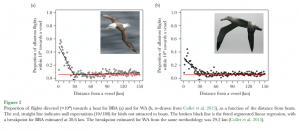
[Source: Collet et al. 2017]
Results demonstrated that the Black-Browed Albatross (BBA) did not come into contact with fishing vessels as often as the Wandering Albatross (WA) (Collet et al. 2017). BBA also seemed to forage in areas that were a greater distance from the fishing vessels than WA (Collet et al. 2017). When the vessels were absent, BBA were not seen foraging in the regions where the vessels typically operate, while WA were (Collet et al. 2017).
Although WA are the larger and more dominant species, they were not observed pursuing the fishing vessels as much as the researchers had expected (Collet et al. 2017). BBA had an 80% chance of being attracted to fishing vessels, while WA had a lesser 60% chance of being attracted to the boats (Collet et al. 2017).
There were apparent differences between these two species and their utilization of fishing fleets as a means for foraging (Collet et al. 2017). This paper suggests that the energetic needs of each species can be an indicator of the risks associated with foraging from anthropogenic sources (Collet et al. 2017).
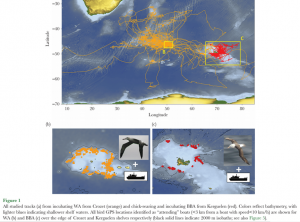
[Source: Collet et al. 2017]
It is vital to understand how species are becoming reliant on anthropogenic sources for food because this can affect their nutritional health. The quality of the fish that albatross are getting from these fishing vessels may not have the nutritional value of the fish they typically hunt. Further, if generations of these animals become dependent on these unnatural food sources, this can lead to issues – if the availability of that source becomes compromised, and birds are reliant to the extent that they do not have the skill to forage on their own.
Work Cited
Collet, J., Patrick, S. C., & Weimerskirch, H. (2017). A comparative analysis of the behavioral response to fishing boats in two albatross species. Behavioral Ecology, 28(5), 1337-1347.


